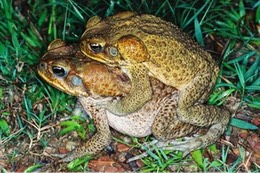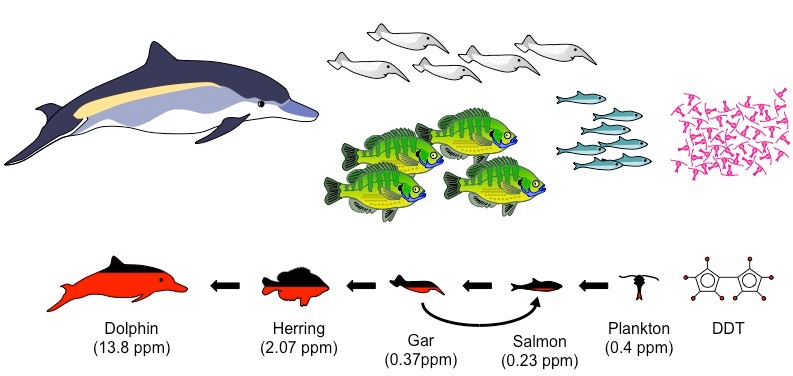G.3.1 Calculate the Simpson diversity index for two local communities

G.3.2 Analyse the biodiversity of the two local communities using the Simpson index
The Simpson diversity index determines the species richness of an ecosystem – a higher index indicates a greater level of diversity
- Changes in the index indicates environmental change – as selective pressures become greater, biodiversity diminishes with extinctions
G.3.3 Discuss reasons for the conservation of biodiversity using rainforests as an example
- Sources of pharmaceuticals may become lost if plant species become extinct
- Certain crops may be improved with alleles from wild plants found in rainforests
- Loss of biodiversity will affect ecotourism, diminishing a potential source of local income
- Interdependent species may be lost, while other organisms may also expand to fill unoccupied niches (negative effects on food chains)
- Loss of plant species may lead to environmental effects such as erosion, flooding, silting of rivers and global warming (trees act as carbon sinks)
- The ability of indigenous human populations to live sustainably within ecosystem might be affected (rainforests preserves human cultural diversity)
- Loss of beauty of the system, depriving future generations of the aesthetic benefits of the rainforest
G.3.4 List three examples of the introduction of alien species that have had significant impacts on ecosystems
Alien species are those that have been transferred from their natural habitat to a new environment where conditions are still suitable for their survival
- The transfer of alien species can be either accidental or deliberate (i.e. as a means of biological control)
- If the alien species should have a detrimental effect on the pre-existing food chains it is classed as an invasive species
Alien species that have had a significant impact on their new ecosystem include:
- Biological Control: Myxoma virus (causes myxomatosis) was introduced into Australia from South America to cull rabbit numbers
- Deliberate Release: Monterey pine trees were introduced to Australia (from California) as a commercial timber crop
- Accidental Release: Rats were introduced to New Zealand by early settlers, who unintentionally transported them on their ships

G.3.5 Discuss the impacts of alien species on ecosystems
Alien species (such as the cane toad) may impact a local ecosystems (i.e. Australia) in a number of ways:
- Interspecific Competition – cane toads competed with native toads and frogs and displaced them
- Predation – cane toads produce a toxin that poisons local predators, disrupting the food chain
- Species Extinction – the Northern quoll has become endangered due to cane toads
- Biological Control – cane toads were supposed to limit sugar cane invertebrate pests (they didn't!)
G.3.6 Outline one example of biological control of invasive species
- The cottony cushion scale is an insect pest from Australia that was accidentally released in California
- It spread and fed on citrus plants (e.g. orange trees) to such an extent that it devastated the Californian citrus industry
- The vedalia beetle is a predatory insect from Australia that was released as a means of biological control
- It worked to limit the numbers of the cottony cushion scale and minimise the economic impact to the Californian citrus industry

G.3.7 Define biomagnification
Biomagnification is the process in which chemical substances become more concentrated at each trophic level
G.3.8 Explain the cause and consequences of biomagnification, using a named example
- DDT (dichlorodiphenyltrichloroethane) is a chemical pesticide that has been used to target insects (most notably mosquitos)
- It is fat soluble and is selectively retained within the tissues of an organism instead of being excreted
- Because organisms at higher trophic levels must consume more biomass to meet energy requirements, they experience increased contamination
- DDT sprayed on water to eliminate mosquito larvae will be taken up by algae and then passed on to the primary consumers (e.g. small fish)
- At each subsequent trophic level the concentrations of DDT stored in the body will increase due to the increased food intake
- Very high levels of DDT were discovered in birds that preyed on fish, and the chemical was found to interfere with formation of hard egg shells
Biomagnification of DDT in a Marine Ecosystem

G.3.9 Outline the effects of ultraviolet (UV) radiation on living tissue and biological productivity
Ultraviolet (UV) light penetrates tissues and damages DNA, causing gene mutation that can lead to uncontrollable cell division (skin cancer)
It can damage the ability of plants to carry out photosynthesis and can kill phytoplankton, reducing primary production and total productivity
G.3.10 Outline the effects of chlorofluorocarbons (CFCs) on the ozone layer
- The ozone layer is a stratospheric region composed of ozone (triatomic oxygen – O3)
- CFCs are broken down by ultraviolet radiation to release chloride ions which react with ozone, breaking it down into oxygen (O2)
- One chlorine atom can destroy 100,000 ozone molecules – small amounts of CFC can break down large amounts of ozone
- The thinning of the ozone layer by CFCs reduces the absorption of UV light in the stratosphere
G.3.11 State that ozone in the stratosphere absorbs UV radiation
Ozone in the stratosphere absorbs UV radiation, however there is a limit to how much can be absorbed
- Regions where the ozone layer is thinner (e.g. due to CFCs) will experience higher terrestrial UV levels and increased risks of cancer